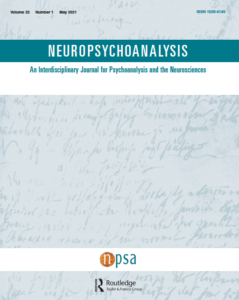NEUROPSYCHOANALYSIS
An Interdisciplinary Journal for Psychoanalysis and the Neurosciences
.
Special Issue
CALL FOR PAPERS
Conversion Disorders: Past, Present, and Future – A Neurological
and Psychodynamic Understanding
The field of neuropsychoanalysis finds itself at a pivotal moment, where the convergence of neurology and psychoanalysis offers unprecedented insights into the human mind. The recent Neuropsychoanalysis Society (NPSA) Congress in Trieste (July 2024), dedicated to Conversion and Functional Neurological Disorders (FND), underscored the enduring significance of these disorders. From historical perspectives to cutting-edge neuroscientific considerations, including Predictive Coding Theory, the conference illuminated the multifaceted nature of conversion disorders.
Historically, psychoanalysis itself was born through the treatment of conversion disorders. The seminal work of Breuer and Freud, Studies on Hysteria, laid the foundation for psychoanalytic theory, making the understanding of these disorders central to both the history and future of the field. Conversion disorders, once at the forefront of psychoanalytic inquiry, are now re-emerging as critical subjects of investigation, not only for their clinical relevance but also for their potential to bridge the gap between neurology and psychoanalysis.
This Special Issue of Neuropsychoanalysis seeks to explore the past, present, and future of conversion disorders through an interdisciplinary lens. We invite contributions that examine the neurological and psychodynamic dimensions of these disorders, aiming to integrate both perspectives into a cohesive understanding.
We are particularly interested in submissions that address:
- Phenomenology and Clinical Presentation: How do conversion disorders manifest in clinical settings, and what are the key phenomenological features?
- Diagnostic Considerations: How do neurological and psychodynamic frameworks intersect in diagnosing conversion disorders? What challenges arise in differentiating these disorders from other neurological and psychiatric conditions?
- Integration of Imaging Studies and Neuroanatomy with Psychodynamic Understanding: How can imaging studies, such as fMRI and PET scans, and neuroanatomical research inform our psychodynamic understanding of conversion disorders? For example, how do brain networks involved in emotion regulation and motor function contribute to the clinical manifestations of these disorders?
This Special Issue aims to create a dialogue between neuroscience and psychoanalysis, reflecting on the historical importance of conversion disorders while pushing the boundaries of contemporary understanding. We encourage submissions that not only address the complexities of these disorders but also propose novel ways of thinking about their diagnosis and treatment.
Submission instructions:
We welcome the following types of papers:
- Review Articles: Comprehensive overviews of the literature on conversion disorders, from their historical roots to modern-day understandings.
- Hypotheses and Theoretical Papers: Innovative ideas that seek to merge neurological and psychoanalytic frameworks.
- Scientific Research Articles: Empirical studies that investigate conversion disorders from a neuropsychoanalytic perspective.
- Case Studies: Detailed examinations of clinical cases that highlight the interaction between neurological and psychodynamic factors in conversion disorders.
Papers should be between 5000 to 8000 words and should follow the guidelines for authors on the Journal’s website. We highly recommend submitting an abstract first before submitting a full paper so that the suitability of the proposed paper can be determined up front, but this is not absolutely necessary. The abstract should be no more than 250 words. Please send abstract submissions via email to Ana Delgadillo at: a.delgadillo@npsa-association.org
The deadline for abstract submissions is 6 January 2025.
The deadline to submit a paper is 7 April 2025.
for this Special Issue.
